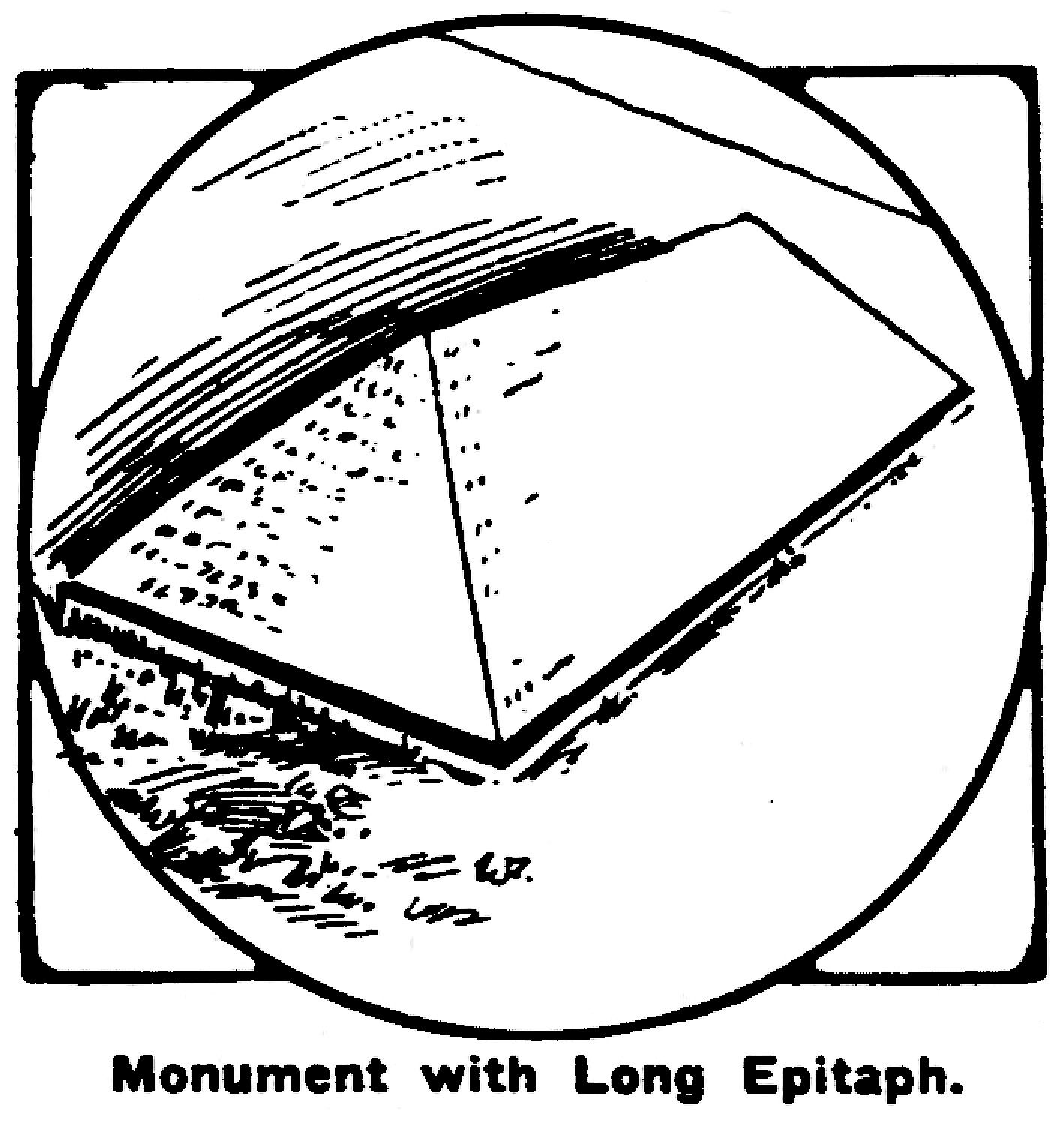Life Story on an Epitaph.
Odd Monument Over Grave of Veteran of Indian Fight.
The longest epitaph in Arlington National cemetery at Washington is that carved on the strangely shaped monument of Captain John Williams, of the marine corps, who died of wounds received in an Indian fight in Florida in 1812. The inscription follows:
“Here lies the remains of John Williams, Esq., late a captain in the Corps of U. S. Marines. Was born in Stafford county, Virginia, the 24th of August, 1765, and died on the 29th of September, 1812, at Camp New Hope, in East Florida. The body of deceased was removed to this spot, over which his brother officers in the marine corps have caused this pile to be erected in testimony of his worth and in their mournful admiration of his gallant end.
“On the 11th of September, 1812, Captain Williams, on his march with a command of 20 men to Davis creek block house, in east Florida, was attacked towards evening by upwards of 50 Indians and negroes, who lay concealed in the woods. He instantly gave battle, gallantly supported by his men, who, inspired by his animated example, fought as long as they had a cartridge left. At length, bleeding under eight galling wounds and unable to stand, he was carried off the battleground, whilst his heroic little band, pressed by superior numbers, was forced to retreat.
“Eminently characterized by cool intrepidity, Captain Williams evinced

during his short but severe contest those military prerequisites which qualify the officer for command, and if his sphere of action was too limited to attract the admiration of the world, it was sufficiently expanded to crown him with the approbation of his country and to afford his brethren in arms an example as highly useful as his exit has sealed with honor the life of a patriot soldier.”
Captain Williams' monument is an elongated pyramid with two long and, two short sides. The inscription, which is in script lettering, covers all four sides of the stone. The stone, though it appears large in me picture, is barely a foot high. It may be of sandstone, but to one unskilled in such matters, it appears to be of molded cement.
